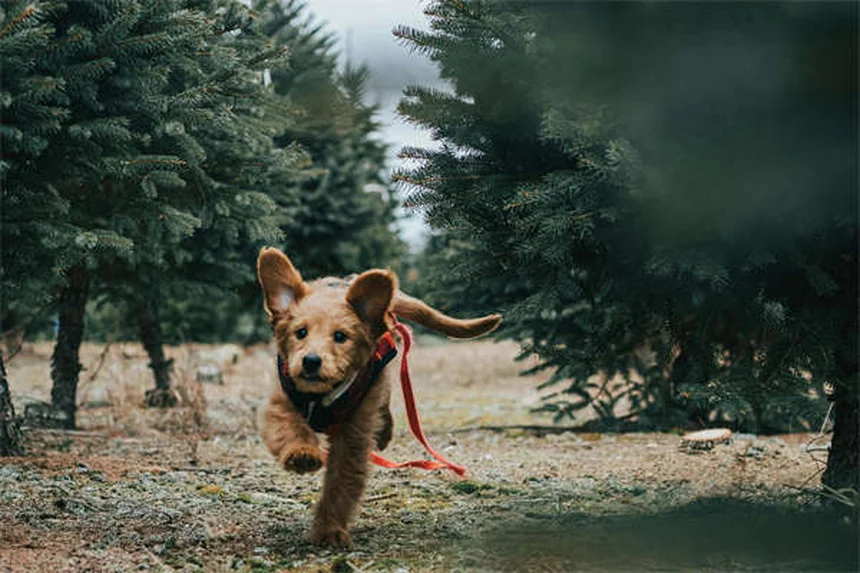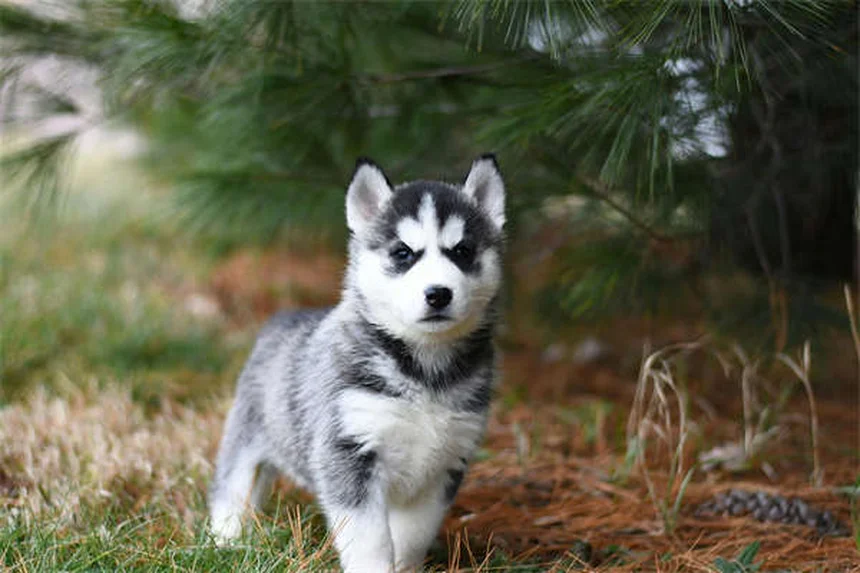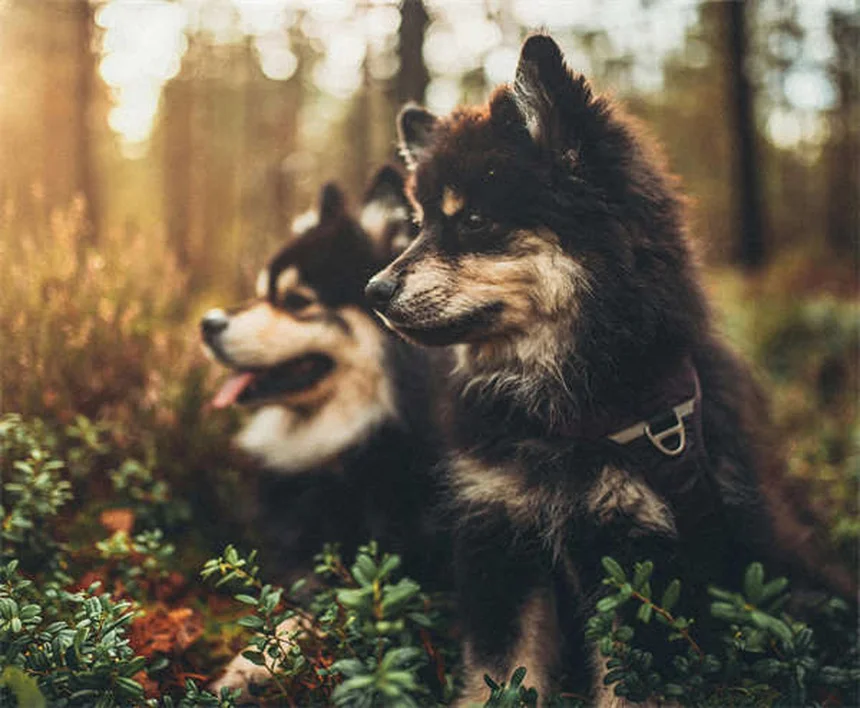Are you accidentally ruining your dog's training without realizing it? The answer is: yes, you probably are! Even the most well-meaning pet owners make simple mistakes that can undo weeks of dog training class progress. From rewarding jumping with attention to letting leash pulling slide just this once, these small daily interactions can create big behavior problems.Here's the deal - dogs learn through consistent reinforcement, and they don't distinguish between training time and regular life. That means every interaction is a teaching moment! I've seen countless clients frustrated by their dog's bad habits, only to realize we're the ones accidentally encouraging them. But don't worry - once you understand these common pitfalls, you'll be able to stop untraining your pup and start seeing real results!
E.g. :Top 5 Most Adorable Rabbit Breeds for Pet Lovers
Advertisement
- 1、Oops! You Might Be Training Your Dog Wrong Without Even Knowing It
- 2、The Jumping Bean Problem
- 3、The Leash-Pulling Tug-of-War
- 4、The Puppy Eyes Conspiracy
- 5、Common Training Mistakes We All Make
- 6、Turning Training Into Quality Time
- 7、The Science Behind Why Dogs Do What They Do
- 8、Common Training Myths Debunked
- 9、Training Tools That Actually Help
- 10、Making Training Fun for Both of You
- 11、When to Seek Professional Help
- 12、FAQs
Oops! You Might Be Training Your Dog Wrong Without Even Knowing It
Wait... Are You Accidentally Rewarding Bad Behavior?
Picture this: you just spent weeks in dog training class, practicing every day, and feeling proud of your pup's progress. But here's the kicker - you might be undoing all that hard work without realizing it! Crazy, right?
Let me give you an example we've all been guilty of: when your dog jumps up to greet you and you instinctively pet him while saying "no." Whoops! In your dog's mind, he just got rewarded for jumping! This is how unwanted behaviors sneak into your daily routine.
The Psychology Behind Your Dog's Misbehavior
Dogs aren't trying to be naughty - they're just doing what works for them. If jumping gets attention (even negative attention) or pulling on the leash gets them where they want to go, they'll keep doing it. We're the ones accidentally teaching them these bad habits!
Here's a fun fact: did you know that pushing your dog away when he jumps might actually feel like play to him? That's right - your "no" might sound like "yes please!" in dog language.
The Jumping Bean Problem
 Photos provided by pixabay
Photos provided by pixabay
Why Dogs Turn Into Spring-Loaded Greeters
Jumping is like the canine version of a high-five - it's their way of saying "Hey! Look at me!" And let's be honest, when that wagging bundle of joy launches at us, our first instinct is to react. But here's the problem:
| What You Do | What Your Dog Thinks |
|---|---|
| Push them away | "Yay! Playtime!" |
| Say "no" while petting | "Jumping gets me love!" |
| Ignore completely | "Hmm... this isn't working" |
The Magic of Becoming a Human Statue
Want to know the secret to stopping jumping? Turn into a boring tree. When your dog's paws leave the ground:
1. Immediately turn your back
2. Fold your arms (no accidental pets!)
3. Become the most uninteresting person in the room
The moment all four paws hit the floor? That's your cue to shower them with attention! This teaches your pup that calm behavior gets rewards, not acrobatics.
The Leash-Pulling Tug-of-War
How Walks Turn Into Sled Dog Practice
Ever feel like you're being walked by your dog instead of the other way around? You're not alone! Here's why this happens:
Dogs are smart - they quickly learn that tight leash = moving forward. And let's be real, we've all let them pull a little when we're in a hurry or it's raining. But these little exceptions add up to big problems!
 Photos provided by pixabay
Photos provided by pixabay
Why Dogs Turn Into Spring-Loaded Greeters
Next time your dog starts pulling, try this:
- The instant the leash gets tight: FREEZE!
- Stand still like a stubborn mule
- Wait until there's slack in the leash
- Then continue walking
This teaches your dog that pulling gets them nowhere (literally!). Bonus tip: bring some high-value treats to reward loose-leash walking.
The Puppy Eyes Conspiracy
Why Your Dog Has You Trained at Mealtime
Those big, sad eyes staring at your sandwich? That's not love - that's a highly evolved food extraction system! And guess what? We fall for it every time.
Here's a question: Do you really think your dog is starving when he begs? Of course not! He's just playing the odds - sometimes those puppy eyes work, so why not try every time?
How to Win the Food Begging Battle
The solution is simple but requires steel willpower:
1. Never feed from the table (not even once!)
2. Give your dog his own special toy or chew during meals
3. If he begs, completely ignore him (no eye contact!)
Pro tip: the Kong Wobbler is perfect for keeping your dog busy while you eat. It's like a food puzzle that makes them work for treats!
Common Training Mistakes We All Make
 Photos provided by pixabay
Photos provided by pixabay
Why Dogs Turn Into Spring-Loaded Greeters
Here's the thing about dog training - sometimes is the same as always to your dog. If you let them jump "just this once" or give table scraps "only on special occasions," you're teaching them to try every time.
Think of it like a slot machine - would you keep playing if it paid out sometimes? Exactly! Your dog feels the same way about bad behaviors.
The Power of Positive Reinforcement
Instead of focusing on what you don't want, try this:
- Notice and reward good behavior immediately
- Keep training sessions short and fun
- Use treats, toys, and praise liberally
Remember: dogs repeat what gets them results. Make sure the results they get are the behaviors you actually want!
Turning Training Into Quality Time
Making Practice Feel Like Play
Who says training has to be boring? Turn these exercises into games:
- "Four on the floor" contests for jumping
- Red light/green light for leash walking
- Hide-and-seek with treats instead of begging
The more fun you make it, the more your dog will want to participate. And isn't that what having a dog is all about - enjoying each other's company?
The Bonding Bonus
Here's something cool you might not realize: every training session is actually building trust and communication between you and your dog. Those 5-minute practice sessions add up to a lifetime of understanding!
So next time you're working on manners, remember - you're not just training your dog. You're creating an unbreakable bond with your best friend.
The Science Behind Why Dogs Do What They Do
Understanding the Canine Brain
Ever wonder why your dog acts certain ways? It's not just random - there's actual science behind it! Dogs have been our companions for over 15,000 years, and they've developed some pretty clever ways to communicate with us.
For example, when your dog tilts his head when you speak, he's not just being cute (though it is adorable!). Research shows dogs do this to better process human speech and pinpoint where sounds are coming from. That's right - your pup is literally trying to understand you better!
The Power of Positive Reinforcement
Here's something fascinating: dogs learn best through positive reinforcement, just like humans do. When you reward good behavior with treats, pets, or praise, you're activating the same pleasure centers in their brains that light up when we get compliments or achievements.
Think about it this way - would you keep going to work if you never got paid? Probably not! Your dog feels the same way about training. Consistent rewards make all the difference in creating lasting good habits.
Common Training Myths Debunked
"Alpha Dog" Theory - Fact or Fiction?"
You've probably heard about being the "alpha" with your dog. But here's the truth - that whole idea is based on outdated research from the 1970s that studied captive wolves, not domestic dogs!
Modern science shows dogs respond much better to leadership based on trust and respect rather than dominance. Trying to "alpha roll" your dog or eat before them doesn't actually establish authority - it just confuses them and can damage your relationship.
"My Dog Knows He Did Wrong"
That guilty look when your dog chews your shoe? It's not guilt - it's fear of your reaction! Dogs don't have the same concept of right and wrong that we do. They simply associate your arrival with past scolding.
Here's a better approach: if you catch your dog in the act, redirect them to an appropriate chew toy. If you find evidence later, just clean it up without fuss. Prevention and redirection work way better than punishment after the fact.
Training Tools That Actually Help
Harnesses vs. Collars - What's Best?
This is a hot debate among dog owners! Let's look at the facts:
| Tool | Best For | Potential Issues |
|---|---|---|
| Flat Collar | Dogs who don't pull | Can damage trachea if dog pulls hard |
| Martingale Collar | Sighthounds and dogs who slip collars | Still puts pressure on neck if dog pulls |
| Front-Clip Harness | Pulling dogs | Some dogs can still pull effectively |
| Head Halter | Strong pullers | Requires proper introduction |
The bottom line? There's no one-size-fits-all solution. Try different options to see what works best for your pup's needs and comfort.
Clickers - More Than Just Noise
You might think clicker training is just about making sounds, but it's actually a powerful communication tool. The click acts like a camera shutter - it precisely marks the exact moment your dog does something right.
Here's why it works so well: dogs live in the moment. If you wait even a few seconds to reward, they might not connect the treat with the correct action. The click bridges that gap beautifully!
Making Training Fun for Both of You
Turning Everyday Moments Into Training Opportunities
Who says training has to be formal sessions? You can reinforce good behavior throughout the day!
- Ask for a "sit" before meals
- Practice "stay" when opening doors
- Reward calm behavior during TV time
- Play "find it" with treats to engage their nose
The more you incorporate training into daily life, the faster your dog will learn - and the more natural good manners will feel to them.
The Joy of Trick Training
Don't stop at basic commands! Teaching fun tricks like "shake," "roll over," or "play dead" has serious benefits:
1. Strengthens your bond through play
2. Provides mental stimulation (tired dog = good dog!)
3. Builds confidence in shy dogs
4. Impresses your friends at parties
Best part? Most dogs love learning tricks because it means extra attention and treats from their favorite person - you!
When to Seek Professional Help
Signs You Might Need a Trainer
While many training issues can be solved at home, some situations call for expert guidance. Consider professional help if:
- Your dog shows aggression (growling, snapping)
- You're dealing with severe anxiety or fear
- Basic training methods aren't working
- You feel frustrated or overwhelmed
Remember - asking for help isn't failure! It shows how much you care about doing right by your dog.
Choosing the Right Trainer
Not all trainers are created equal. Look for these green flags:
- Uses positive reinforcement methods
- Has proper certifications (CCPDT, KPA, etc.)
- Offers a free consultation
- Makes you and your dog feel comfortable
- Provides ongoing support
Steer clear of anyone who promises instant results or uses harsh corrections. Good training should be enjoyable for both you and your pup!
E.g. :3 Dog Behaviors You Can Accidentally “Untrain” | PetMD
FAQs
Q: Why does my dog keep jumping even though I tell him no?
A: Here's the surprising truth - when you say "no" while pushing your jumping dog away, your dog might actually think you're playing! Dogs don't understand words the way we do - they respond to our energy and actions. Even negative attention (like scolding) can reinforce jumping because it means your dog got a reaction from you. The key is to become completely boring when your dog jumps - turn away, fold your arms, and only give attention when all four paws are on the floor. Consistency is crucial - if you sometimes allow jumping and sometimes don't, your dog will keep trying just in case!
Q: How did my dog develop such a strong leash pulling habit?
A: Leash pulling sneaks up on us because it happens gradually over many walks. Every time you let your dog pull you toward something interesting (even just a little), you're teaching them that pulling works. Dogs develop muscle memory too - they learn that tension on the leash means "go forward." To fix this, you need to break the cycle by stopping completely whenever the leash gets tight. It might feel awkward at first, but your dog will quickly learn that a loose leash is the only way to move forward. Bring some high-value treats to reward good walking behavior!
Q: Why won't my dog stop begging at the dinner table?
A: Begging persists because it's incredibly rewarding for dogs - they get both food AND your attention! Even if you only give table scraps occasionally, your dog will keep trying because they remember that sometimes it works. The solution? Never feed from the table - not even once! Instead, give your dog their own special treat toy during mealtimes. Products like the Kong Wobbler keep them happily occupied while you eat. Be prepared for an "extinction burst" where begging gets worse before it gets better - this is normal as your dog tests if the old rules still apply!
Q: How can inconsistent training cause behavior problems?
A: Inconsistency is one of the biggest training mistakes we make! Dogs learn through patterns, so if a behavior works sometimes (like jumping or begging), they'll keep trying it all the time. Think of it like a slot machine - would you keep playing if it paid out occasionally? Same principle applies to your dog's behavior. The solution is to set clear rules and stick to them 100% of the time. If you don't want your dog on the furniture, never allow it - not even "just this once." Consistency helps your dog understand exactly what's expected.
Q: Can training actually improve my bond with my dog?
A: Absolutely! Training isn't just about obedience - it's about building communication and trust between you and your dog. When you take the time to teach your dog what you want (and consistently reward good behavior), you're creating a shared language. Short, positive training sessions strengthen your relationship while preventing behavior problems. Plus, dogs love having a "job" to do and thrive on the mental stimulation training provides. Think of it as quality time that makes your whole life together more enjoyable!
